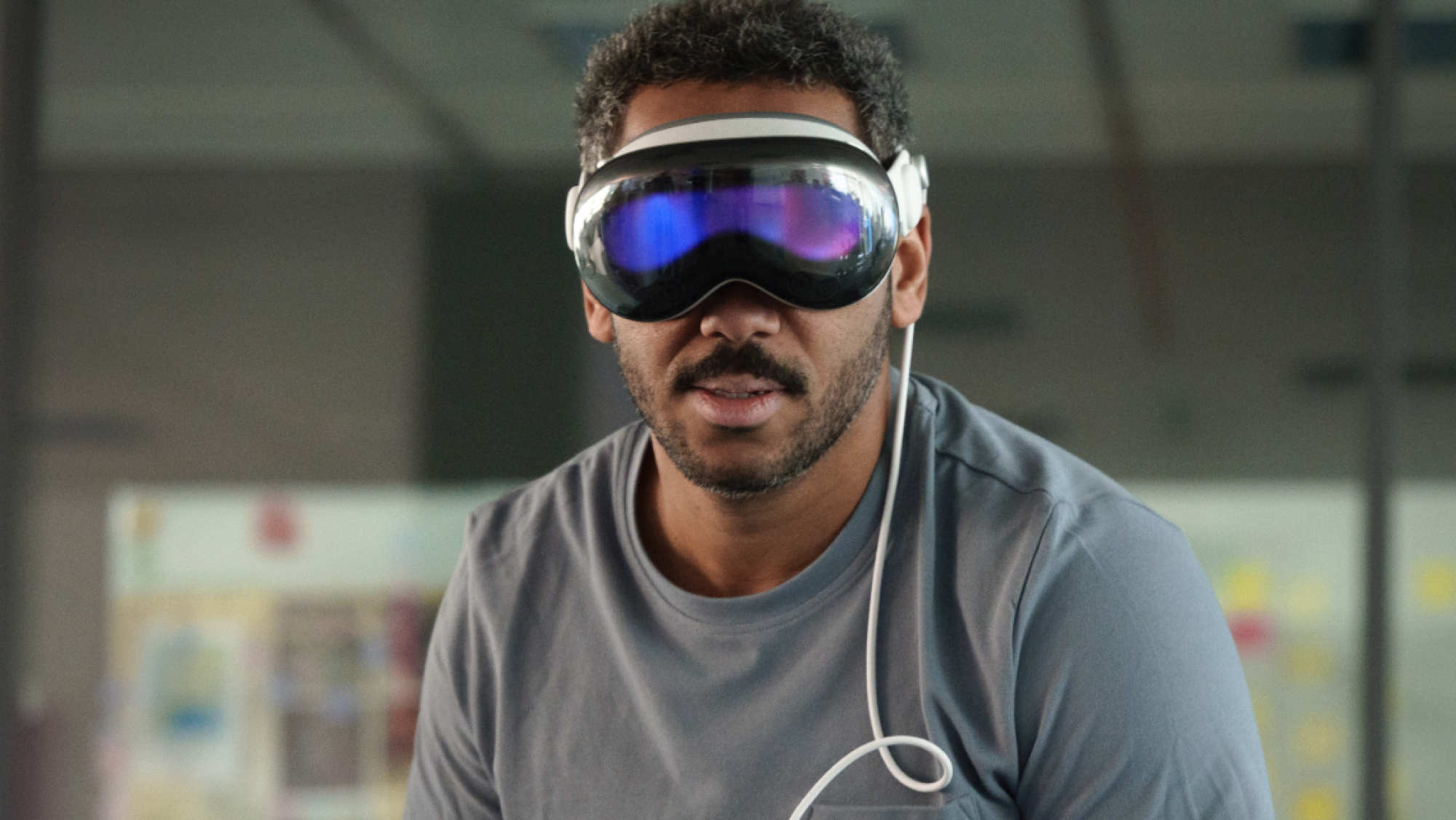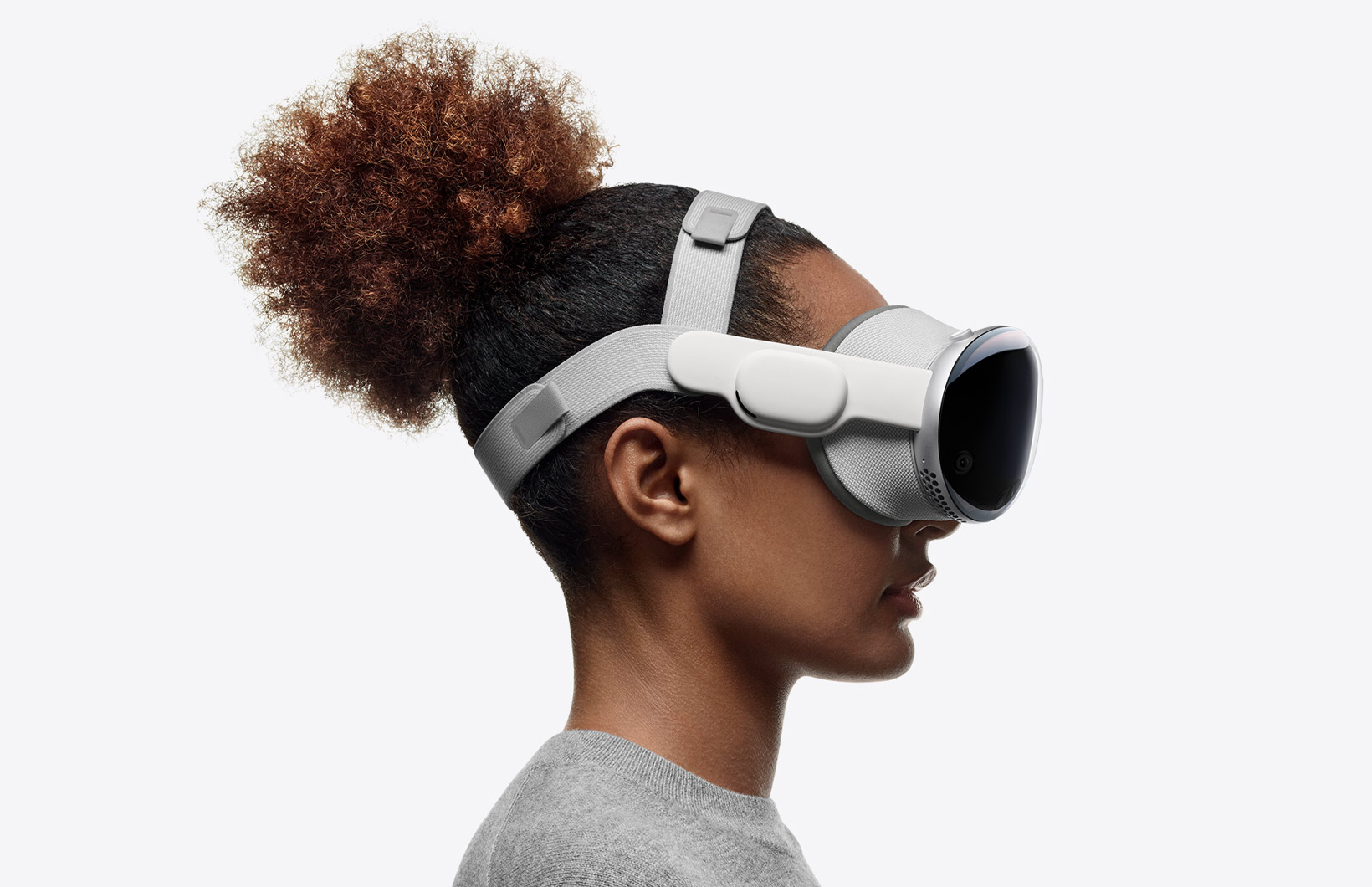We tested the Vision Pro: augmented reality becomes reality
Although it is not yet on sale in Europe, and has only recently (March 2024) become available in Switzerland, Atipik has managed to get hold of an Apple Vision Pro. After a few weeks of discovery and testing, we've decided to share our opinion with you, and above all to answer the question we've all been asking ourselves: *Is the Vision Pro really useful?

This experience has made us a little nostalgic. Back in 2015, we had the chance to preview an Apple product: the very first Apple Watch. Over the past few weeks, we've had the chance to try out and explore this new device that everyone is talking about. As well as the astonishment we felt when we first tried it out, we'd like to share our thoughts and discoveries with you today.
Initial reactions
When Yannick brought the Vision Pro into the open space, and we took it in turns to try it out, these were the cheers that echoed through our offices:
- "WOW"
- "Oh yeah!"
- It's heavy, I can't imagine having it on my nose all morning".
- "No, but it's just amazing!
- "It doesn't work for me, how did you do it?"
- Impressive... But no! Did you see the rhino?"
- "It's blurry, despite the calibration, it doesn't fit very well".
- ...
Opinions are divided, with some people finding the headset revolutionary and others unable to calibrate it properly and therefore unable to take full advantage of the experience. Some are already imagining themselves watching their favourite films, in complete immersion... But only :
”It’s pretty lonely in there”
The Verge
What's Apple's Vision Pro hiding under the hood?
Stefan, product designer at Atipik, shares his thoughts on the quality of the Vision Pro.
Once you put it on your nose, and after just a few minutes of use, you can feel the screen, the quality of the screens isn't bluffing and chromatic aberrations quickly become apparent. When you move your head, there's a sort of badly measured motion blur.
Stefan, Product Designer

The mixed reality headset's cameras require a lot of light, and they quickly lose transmission quality, giving an approximate view of the environment while the interface remains clear.
However, the sensation of depth is really impressive, and that's where it stands out from other headsets. The weight didn't bother Stefan too much, although it still feels heavier than the Meta or HTC-Vive headsets. The quality of the headset is excellent, and the choice of material is 'comforting' compared to other headsets, which is necessary if we are to make an overall assessment of this type of product.
Getting to grips with the Vision Pro
Right from the start, the interface is very pleasant to look at compared to other headsets and the management of elements in space is fluid. It's an interface worthy of Apple, and one that kick-starts MR (Mixed Reality) interface design. Unfortunately, eye tracking remains approximate... whereas finger tracking is almost perfect. It's so satisfying to be able to press on the interface 'in a vacuum' to launch an application, type on the keyboard, draw and move things around.
It feels so natural to be able to interact in this way rather than 'just' being a spectator and waving your hands. It seems almost old school to me and I have a feeling of déjà vu with Eye Toy on Playstation 2 or Wii.
Stefan, Product Designer
Our impression is that the space computer is only spatial in terms of reproducing the sensation of space, but not yet in terms of the interactions it offers.
When I put the helmet on my head, I wanted to grab, move and move around, not have floating screens around me that I had to look at and interact with just like... computer screens. In my opinion, interaction with the hands (or the whole body) is a much more viable option for developers than eye tracking and being a 'spectator'. If they go down a more 'tangible' route, I'll honestly feel comfortable using it until the battery runs out. Besides, I see it as a wonderful way of adding movement to everyday life.
Stefan, Product Designer
Opportunities for Vision Pro
The future of this headset will lie both in Apple's decisions in terms of human-machine-interface technology and in designers' ability to exploit a new dimension in order to offer users spatial experiences. Our product designers were able to test the use of Figma in the browser.
It's as if I feel closer to the design, as if a screen doesn't separate me from what I'm producing. I imagine being able to display a 3D prototype of a smartphone right next to me so that I can 'physically' see the interface I'm creating, while at the same time being able to hold interface components to see which would be the most suitable.
Stefan, Product Designer
In certain professional fields that require an interface that is responsive to the physical world, such as aviation or rail, we can easily imagine use cases. Why not also in the cinema with pre-production or production tools, for example when preparing a scene, having the possibility of moving the lighting and sets to get an overview and transmit it to the teams, or even to see the focus clearly. In sport, too, it would be possible to record the action from an external point of view and go back over it to analyse the performance in 3D. Otherwise, in education, it would be great to be able to discover museum pieces just a few centimetres from your eyes, environments at the other end of the Earth, etc.
Vision Pro: Flop or Top?
These first impressions may seem mixed, but they simply reflect the early nature of the Vision Pro. However, beyond these initial considerations, there is enormous potential to be explored It will be essential for suitable applications to emerge. What's more, VisionOS offers a dimension of human interaction that is still underused, and perhaps still misinterpreted due to Apple's lack of positioning on the product.
For the moment, we're not doing anything with it, it's a prototype.
I've tried working with it but it's not comfortable in the long term.
At Atipik, we can't wait to see and develop applications that offer an immersive and innovative experience! What's more, when will there be a space application that lets you create space applications? A Figma-spatial?
Written by


